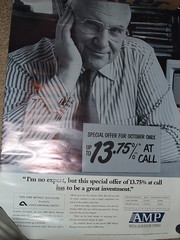Ch.13 AP Microeconomics (The Costs of Production)
0.0(0)
0.0(0)
Card Sorting
1/24
Earn XP
Description and Tags
Study Analytics
Name | Mastery | Learn | Test | Matching | Spaced |
|---|
No study sessions yet.
25 Terms
1
New cards
Profit
Total Revenue - Total Cost or in symbolic terms P = TR - TC.

2
New cards
Explicit costs
Input costs that require an outlay of money by the firm (e.g. rent). Money that actually leaves a firm in the productive process. Distinguish from implicit costs.

3
New cards
Total revenue
The total amount of money a firm receives by selling goods or services symbolized by TR.
4
New cards
Total Cost
The market value of ALL the inputs a firm uses in production, symbolized by TC, is calculated by adding fixed costs and variable costs. Also depends on accounting perspective and economic perspective.
5
New cards
Implicit costs
Input costs that do not require an outlay of money by the firm (e.g. interest forgone on money used). The opportunity costs associated with a firm's use of resources that it owns.
6
New cards
Interest
A large amount of money losses implicitly can be the cost of capital (investment), by buying the capital you forgo _______ you could have gained.

7
New cards
Accounting profit
Total revenue minus total explicit cost, Profit will equal more than 0 in this calculation.

8
New cards
Economic profit
Total revenue minus total cost, including both explicit and implicit costs, in this view profits are usually not as large as accounting profit.
9
New cards
Production function
The relationship BETWEEN quantity of inputs (usually worker) used to make a good and the quantity of output(product or services) of that good. Gets flatter as input inceases.
10
New cards
Marginal Product
The increase in output that arises from an additional unit of input( usually a worker acts as the unit of input).
11
New cards
Diminishing Marginal Product
The property whereby the marginal product of an input declines as the quantity of the input increases. Makes the production function level off after a while. Makes sense because the firm may become more crowded which reduces overall efficiency.
12
New cards
Total cost curve
A graph that shows the relationship between total variable cost and the level of a firm's output. Gets steeper as the amount produced increases.
13
New cards
Fixed costs
Expenses that remain the same for a period of time; must be paid regardless of the quantity of a good or service produced/sold. Like rent., salary ,etc,.

14
New cards
Variable costs
Costs that change directly with the amount of production (e.g. energy supply and labor costs).
15
New cards
Industrial Organization
The study of how firms' decisions about prices and quantities depend on the market conditions they face. An example of questions that this can answer is : "How does the number of firms in a industry affect the prices in a market and the efficiency of the outcome.
16
New cards
average total cost
Total cost divided by the quantity of output produced. Decreases in a somewhat parabolic rate.
17
New cards
average fixed cost
Fixed cost divided by the quantity of output. Decreases at a somewhat parabolic shape.
18
New cards
average variable cost
Variable cost divided by the quantity of output. Always rises at a constant rate.
19
New cards
marginal cost
the increase in total cost that arises from an extra unit of production, Always rises at a pretty constant rate.
20
New cards
Efficient scale
The quantity of output that minimizes average total cost, is at the bottom of the ATC curve which happens to be an intersection with the MC curve.
21
New cards
falling
Whenever marginal cost is less than average total cost, average total cost is ________

22
New cards
rising
Whenever marginal cost is more than average total cost, average total cost is ________
23
New cards
economies of scale
The property whereby long-run average total cost falls as the quantity of output increases (left-most downward sloping part of the long-run ATC). Arises because higher production levels allow specialization among workers, allowing each of them to get better at a specific task.
24
New cards
diseconomies of scale
The property whereby long-run average total cost rises as the quantity of output increases (right-most upward sloping part of the long-run ATC). Usually arise because of coordination problems.
25
New cards
constant returns to scale
The property whereby long run average total cost stays the same as the quantity of output changes